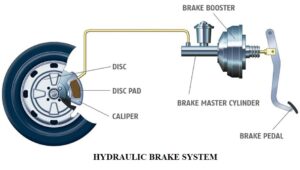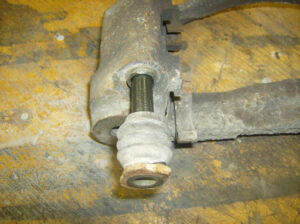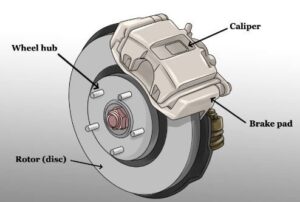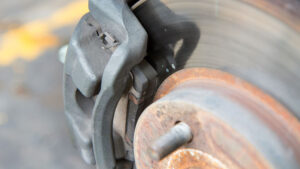Brakes should be replaced when worn out, but how often do brakes need servicing? Servicing brakes means servicing the brake components (cleaning, lubricating, etc.) without replacing them. Brakes are serviced to make sure they function properly between replacements and the car is safe to drive. Brakes need to be inspected regularly and serviced when needed: for example, when some of the parts show signs of sticking and seizing up or when rust and dirt buildup which causes brake noises. Some car makers include brake service into the maintenance schedule, others specify that brakes need to be inspected in regular mileage or time intervals; typically every 5,000-7,000 miles or every 4-6 months, whichever comes first.

Brakes also need to be inspected and serviced (or replaced) if they are not working properly, squeak, grind or produce other abnormal noises, or if the brake pedal doesn’t feel “right.” The benefits of servicing brakes are that the brake pads or shoes wear more evenly and last longer, and the brakes are less likely to squeak. Servicing brakes is especially important in the “salt belt” because presence of road salt speeds up the corrosion of brake parts.
Most cars on the road today have disc brakes on all four wheels. Some vehicles have drum brakes on the rear wheels. How disc brakes work: the brake pads are installed on both sides of the brake disc (also known as rotor). When a driver presses the brake pedal, the hydraulic pressure pushes the pistons out of the brake caliper. As a result, the two brake pads squeeze the brake disc between them. To work properly, the brake pads have to be able to slide inside the brake caliper towards and away from the disc. In a brake system with a floating caliper found in most cars, the caliper itself also must be able to slide laterally on its bracket (anchor plate). In the brake system on wheel diagram below, the caliper slides on two guide (slide) pins.
The disc brakes endure a lot of heat when braking and can get wet during the rain. As a result, the brake components can rust. Rust buildup may cause brake pads to stick within the bracket or the brake caliper guide (slide) pins to seize up. This problem is very common in regions where road salt is used in the winter.


When brake pads stick, or the caliper seizes up, the brakes might not work properly or not release fully. This will cause the brakes to overheat and the brake performance will be compromised. The brake caliper might get damaged from overheating and require replacement. For many cars, this issue is the number one cause of premature or uneven brake pad wear and brake caliper replacement. A squeaking noise coming from brakes is one of the possible symptoms of this problem.
Similar issues happen with rear drum brakes: rust on the brake drums can cause squeaking, and some components, especially the parking brake parts, may seize up due to corrosion or lack of lubrication. In most cars, drum brakes have a self-adjusting mechanism that may also seize up. In time, a seized self-adjuster may cause longer pedal travel. Of course, drum brakes are fully covered by the drum, and they usually can last longer without servicing.
In most service shops and dealerships, mechanics inspect your brakes whenever your wheels are removed when doing a tire rotation or other service. Brakes cannot be properly inspected without removing the wheels. For this reason, we recommend having your brakes properly inspected at least once a year to keep your car safe. Check the reviews when choosing the shop; you don’t want to trust your brakes with incompetent mechanics. The brake inspection typically involves checking the brake components according to the manufacturer’s guidelines. For example, measuring the brake pad or brake shoe material thickness and inspecting brake discs. If there are signs that pads or caliper guide (slide) pins are not moving freely, your mechanic may recommend servicing your brakes. The disc brake service includes removing the pads and calipers, cleaning and lubricating guide pins and the caliper brackets to prevent sticking or seizing. The brake discs (rotors) might also need to be cleaned out from the surface rust, especially on the edges, to prevent squeaking. Servicing brakes must also be done following the manufacturer’s instructions.
The rear drum brake service involves cleaning the components, including the parking brake parts and lubricating parts that are in need, as well as removing excessive rust buildup from the drums. Rear drum brakes and the parking brake might also need to be re-adjusted.

